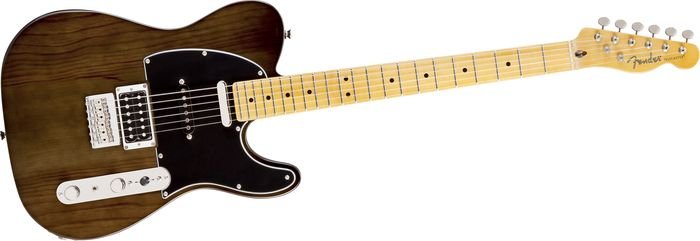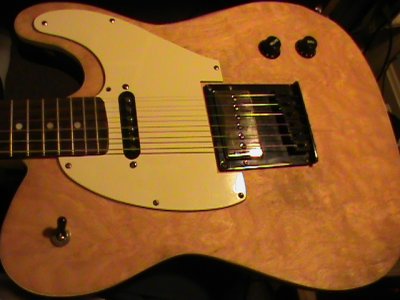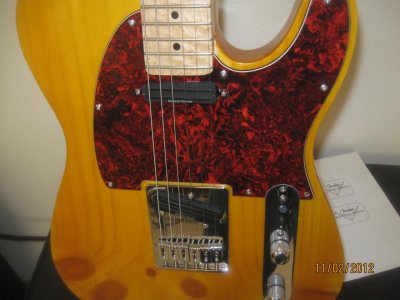Re: Where's a good place to buy a PINE Tele body?
I'll admit I have no experience with sugar pine specifically, only the soft pine you get at a lumber yard.
Were the original Tele prototypes built from sugar pine, or another kind of pine?
TL/DR version: 1) Fender used multi-piece western sugar pine for those bodies. 2) They weren't technically Tele prototypes, but Esquire prototypes and early production Esquires. When they were produced, not even the Broadcaster existed yet.
Full version: I've actually put a healthy amount of research into those early pine Fenders, as one of my most anticipated projects is an accurate reproduction of one of the early model single-pickup Esquires.
There were two prototypes (one "Snakehead" and one that looked closer to what became the Tele), and about four dozen early production guitars made of pine. These were built over a period of about four months, from late winter to summer of 1950. The earliest ones had one pickup. But after hearing feedback from retailers and musicians, Fender decided that the model should have two by the time the N.A.M.M. show happened, so they designed the neck pickup and started putting them in. At this time the Broadcaster did not yet exist. The Esquire was the only model. That was the originally intended name for the guitar, and it had nothing to do with how many pickups it had.
After hearing more and more feedback after N.A.M.M., Fender decided to make a few more significant changes. The guitar was well received sonically, but people complained that it seemed a bit cheesy. It was decided that a more high-class looking finish should be used, and a translucent finish resembling some popular furniture finishes of the time was picked ("blonde"). Making the instrument looking classier with that finish was hard to do with pine, so ash was picked for its "better" grain. To make the guitar feel more substantial and less toy-like, it was thickened 1/4" to what we now think of as the standard Fender body thickness. The guitar was also renamed the Broadcaster, and the Esquire name was retired.
A few months later, after those changes were in full effect, Fender decided to recycle the Esquire name. It would be used on the entry-level version of the Broadcaster. From that point forward, "Esquire" meant a single pickup guitar. Broadcaster bodies were used for both models. That allowed factory or dealer upgrades to the dual pickup layout to be performed very easily. So sometimes you'll see an old two-pickup ash or alder Esquire, but it did not come that way from the factory. It was modified after purchase by the dealer, the factory, or the user – or
possibly by the dealer before being sold the the first owner.
Now that I spent to long explaining the history, on with the specs. The variety of wood used on those first few dozen production Esquires was western sugar pine. The body blanks were made of as many as six pieces of 1x lumber (which as you know actually measures at about 3/4" thick). They were laminated top to bottom ("pancake" style) and joined side to side to make a 1-1/2" – 1-9/16" thick body blank. Imperfections in the wood were drilled out and plugged with dowels.
The paint used was not nitrocellulose lacquer, but a much more "plasticy" stuff, cellulose acetate butryrate. It was black, and thick, so the quality of the wood wouldn't matter. It was a carryover from their lap steels. At the time, Fender's lap steels got their color not from being painted, but by having colored acetate sheet laid on the top. The sheet was attached, then the entire instrument was sprayed with the cellulose acetate finish (clear). It's basically the same stuff that was used for photographic film base before the introduction of "Safety Film." It's also basically a sprayable form of what Gibson humbucker bobbins were made of several years later. This finish was abandoned along with the above-mentioned changes after the 1950 N.A.M.M. show.



